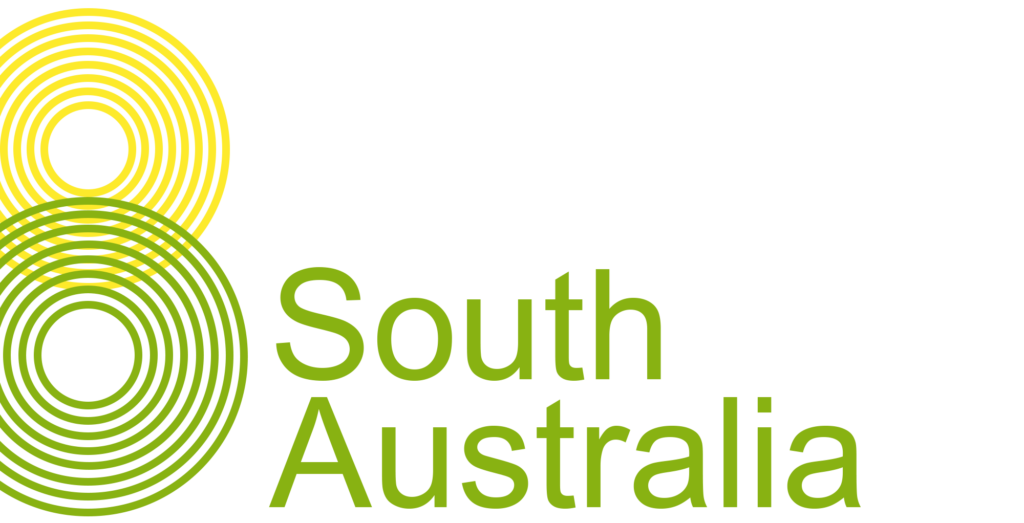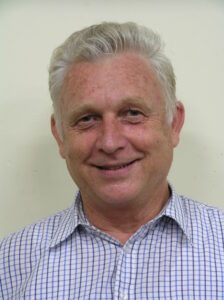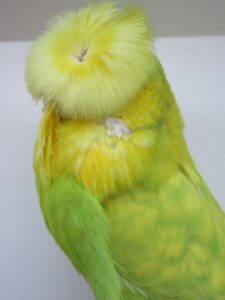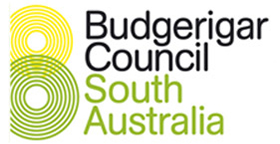
Genetics of Crested Budgerigars

Let me begin by saying that Genetics of Crested Budgerigars are complex. Crested budgerigars are budgerigars of any colour and any variety with a disturbance in the feather pattern, ideally restricted to the head, that affects the outline of the bird. The presence, position and type of crest is determined by complex inheritance. This simply means that the underlying genetics is polygenic, with more than one gene involved. Crested budgerigars are classified into three distinct exhibition types. However, in practice there can be a degree of continuity between these forms since there is continuity in the position of the crest locus:
- Full circle crested: This is the preferred phenotype with a raised ring of feathers radiating from a central locus around the top of the head.
- Half Circle Crested: This expression is a raised half circle of feathers around the front of the head, radiating from a central locus. The fringe can be oriented up or down.
- Tufted Crested: This form varies from a cockatiel like tuft to a cluster of disturbed feathers just above the cere. It arises when the locus of the crest is close to the margin of the cere.
- Apart from these three ideal exhibition forms of the crest as described in The Standard there are other expressions:
- Asymmetric feather swirl over one eye: This occurs when the locus of the crest is close to the margin of an eye, rather than close to the margin of the cere, as in the Tufted.
- Double crest: Commonly seen as two full circles, one on top of the head and one on the backskull or back of the neck. But positions vary. For example, a rare expression can be two small full circles either side of the cere positioned roughly in the region between where loci for tufted or half circle crests would form.
- Triple crest: As for the double crest but with an additional full circle crest on the back. Again, there are variations, commonly with two of the three full circle crests positioned closely and centrally on the top of the head. Multiple crests have been popularised in Asia and the Middle East since the 1980’s.
Not all feather disturbances associated with the crested gene are expressed as crests as defined above. Feather disturbances indicating the bird carries the crested gene are:
- A single feather on the top of the head out of place.
- One or a few feathers on the head out of place seen in the nest when feather quills start to appear. Phenotypically such feather disturbances disappear during development due to the weight of surrounding normal feathers.
Breeders who specialise in breeding crests in large numbers would be able to describe additional complex crested patterns. To summarise, the type of crest is dependent upon the position of the crest locus. The position of the crest locus is continuous rather than discrete so the neat Full Circle, half Circle and Tufted classifications can sometimes be ambiguous but the ideal expressions of these three manifestations are the exhibition forms that are recognised and described by The Standard. There are several specialist rare clubs that support the development of the Crest mutation, such as the Crested Budgerigar Club out of the UK.
History of Crested Budgerigars

Historically crested were first described in Sydney, Australia, in the 1920’s. They appeared in the UK and Europe just prior to World War II and in Canada just after WWII. Spread of the Cresteds via unrecognised Crestbreds or by independent mutations might be difficult to disentangle. The Crested Budgerigar Club of Australia was founded in 1992 to promote the variety in Australia and published a Crested Handbook in 2002, edited by Frank Jefferies, with the encouragement and input from Ghalib Al-Nasser and the Crested Budgerigar Club UK. During 1993-1998 Shiralee Reardon was the Coordinator of the Crested Club of Australia with “Coordinator” in essence covering the de facto roles President, Secretary, Treasurer, Membership Officer and Editor of their magazine. The inaugural management structure was formalised in 1998 with Frank Jefferies as President, Rob Hugo as the Secretary/Treasurer and Shiralee Reardon as the Editor of their magazine the Full Circle. This was the driving force behind the acceptance of Cresteds as a national class by the ANBC from 2003 onwards. A second edition of the Crested Handbook edited by Ken Yorke, Rob Hugo and George Clarke was published by the Crested Budgerigar Club of Australia in 2015 and can be found on the BRASEA website. It covers additional complexities not covered here.
Breeding and Exhibiting Crested Budgerigars
Cresteds were an exhibition class at the Australian nationals 2000-2002 before acceptance as a class for points. The winning birds in those years were bred by Rob Hugo. The first inaugural winner for points at the 2003 Cairns national show was a South Australian crested bred by Kelwyn Kakoschke. That bird and the runner up also bred by Kelwyn had substantial full circle crests on bodies far in advance of the competition at that time, as far as I can recall as one of the SA Bird Carers at that show. The playing field has been somewhat evened out since then as the popularity of crested spread and overall quality continued to improve. Kelwyn won again in 2005 and Doug and Ruth Lange won the class for SA in 2014 when the nationals were last held in Adelaide. Although few breeders take on the Cresteds, South Australia has sent a full team of three Cresteds to the nationals each year since 2003, as far as I can recall.
Genetics of Crested Budgerigars
The genetic basis for crest formation needs to be conceptualised to enable the crest breeder to formulate a breeding strategy. The presence, position and type of crest is under polygenic control. Under this model, there are multiple genes where individually each of the genes follow Mendelian inheritance, but the effect of each gene is not strong enough for the inheritance of aphenotype associated with each of the genes to be independently tracked. This genetic model can involve at least one dominant gene with incomplete penetrance. Ken Yorke in 2002 proposed this concept of partial dominance in the context of Cresteds. Incomplete penetrance means that the gene is required for expression of a crest but having the gene does not necessarily lead to expression of a crest. The crest gene can only produce a crest with the help of other genes, known as modifier genes, to enable expression of a crest. The extent to which these modifier genes affect the position and type of crest is referred to as variable expressivity. This serves as a working hypothesis in the absence of evidence to the contrary. There may be random additional non-genetic developmental effects that also effect expressivity, such as positioning the crest locus off centre, to further complicate the picture.
The concept of penetrance and expressivity in the context of crested budgerigars was tested in recent times by George Clarke in a series of articles dating from 2004. He carried out a statistical analysis of breeding records from more than 3,000 progeny supplied by members of the Crested Club of Australia. The data fitted what he referred to as the PE Theory where P referred to penetrance and E referred to expressivity. This model provided a better fit to the data than the earlier Inhibitor and Initiator models. The combination of incomplete penetrance of a dominant gene with variable expressivity is not new. It is an established model that explains the inheritance of some human genetic disorders. Various rare familial human epilepsies are classic examples.
Crested Budgerigar Breeding Expectations
These are average values with broad ranges taken from a George Clarke article that I may have copied from an issue of the Full Circle magazine. Broad ranges arise because we don’t know if the Crested parent, we use is single factor or double factor for the dominant Crested gene with incomplete penetrance and we don’t know the distribution of potential modifier genes in either parent. Crest bred refers to any non-Crested bird that has a Crested parent, and any Crestbred may or may not carry a partially dominant Crested gene. Rough breeding expectations are:
• Full Circle Crest X non-crested outcross: Expect 14% Crests but my experience is not anywhere as high as this, for which I have no clear explanation other than suggesting the possibility that some of the non-crested outcrosses could have been crest breds.
• Crest bred X Crests: Expect 31% Crests
• Crest X Crest: Expect 53% Crests
Crested Budgerigar Breeding Strategies
Cresteds are the most difficult of all budgerigars to breed to an exhibition standard. Crestbreds with minor feather disturbances such as a single feather out of place in the cap, or a few abnormally directed feathers at the stage of quill formation, for the purposes of breeding are considered to have the Crested gene. When breeding all non-Crested colours and varieties we endeavour to maintain and improve Type, Colour and Markings. The same principles apply for maintaining Type, Colour and Markings in Cresteds, but in addition the challenge is to breed the preferred Full Circle Cresteds. Because of the small proportion of Full Circle Cresteds that we breed we may need to keep them all, or most of them, so we lose size in the absence of the necessary selection pressure to maintain or increase size. The only answer is to devote more of the breeding room to Crested pairings to breed more Cresteds to have enough to only select the largest Full Circle Crested to keep.
Moving now into the specifics of breeding strategies, and noting that different Crested breeders might have different strategies to the basic ones I attempt to follow:
- Year 1: Full Circle mated to a non-Crested outcross. The purpose of this pairing is to increase size and counteract excessive inbreeding within the Crested family. Rarely does this pairing produce a crest, so the objective is to breed Crestbreds that carry the crested gene to then cross to a Full Circle Crest the following year. For outcrossing I prefer to use Blue and Yellow faced Blue Series, and Dominant Pieds and Spangles in the Green Series. Breeding Cresteds produces a lot of wastage, that is, small Crestbreds with no crests. The colours and varieties that I use as outcrosses facilitates disposal of the wastage through the pet trade. To that end, I never mate grey to green because that produces small grey greens that are not so easy to unload as pets. Intuitively from a purely physical perspective the best outcross might be a hen since a small Crested cock probably finds it easier to mount a large hen than does a large cock find it to mount a small Crested hen desperately clinging to the perch.
- Year 2: Crestbreds from year 1 mated to Full Circle Crests. The purpose of this pairing is to determine which Crestbreds produce Cresteds, so this step is essentially a test mating. Only half of the Crestbreds from the Year 1 mating will inherit the Crested gene, unless the outcross was mated to a Crested that was double factor for the Crested gene. Preference is given to pairing with Full Circular Cresteds to skew the progeny toward the preferred Full Circle expression if there is some heritability for the type of crest produced. The previously mentioned modifier genes may be part of that underlying genetic architecture favouring Full Circle Cresteds. Crestbreds derived from outcrossing that breed Cresteds are valuable assets within the breeding strategy.
- Year 3 and onwards: Full Circle Cresteds mated to Crestbreds derived from the outcross and known from the test cross to breed Cresteds. The purpose is to breed show birds with full circles or crests of any other type for use in the breeding program. Ideally the above pairings will give you the show birds provided you devote enough breeding cages to maintain a critical mass of Cresteds. I breed too many other varieties to specialise in breeding Cresteds, so the following pairings associated with loss in average size are required as insurance to maintain the Crested family.
- Any year: Quality Crestbred with visual features such as a single feather out of place in the cap mated to a Full Circle Crested. The purpose of this mating is to produce Cresteds of reasonable quality in numbers to maintain the family.
- Any year: Crested mated to Crested. Purpose is to maintain numbers of Cresteds if the above pairings fail to produce sufficient Cresteds to guard against extinction. I avoid Full Circle mated to Full Circle in case that mating has increased propensity to breed Double Cresteds and Triple cresteds, but in reality, any Crest X Crest mating can produce these. To my surprise I bred two Triple Cresteds during 2020, one from a pair where both parents only had a single feather in the cap out of place and the other from a Full Circle Crest mated to a Crestbred. I have never succeeded in breeding from a Triple Crest.
As can be seen above, my breeding strategies are heavily weighted toward having a Full Circle Crest as one member of the pair in case there is any genetic predisposition for the positioning of the crest locus. However, in practice one is often short of enough Full Circles so you may need to breed from pairings that do not involve a Full Circle. The type of crest produced by any pairing cannot be predicted with any degree of certainty.
Crested Budgerigar Exhibition Features as described in The Standard
Since 2013 the quality of the crest on the head has been allocated a maximum of 30 points, with the remaining 70 points allocated proportionately for Type, Colour and Markings specific to each variety. Directing significant focus onto the quality of the crest was designed to penalise large budgerigars with insignificant or off-centre crests.
- The crest now needs to be large and complete in feathering such that it is a prominent feature of the exhibit.
- Three ideal forms of crest are recognised on the show bench: Full Circular, Half Circular and Tufted.
- Multiple crests or a crest outside the areas described are penalised.
- The Full Circular Crested is the ideal expression and the preferred version over the Half Circular Crested which in turn is preferred over the Tufted Crested. Prior to 2014 no preference was officially recognised between the three forms, but in practice judges preferred the Full Circular Crest with its more prominent expression.
The Standard in its present form for all varieties has evolved into a larger and far more prescriptive document than it once was. In relation to Cresteds:
- The Full Circular Crest should be a full flat round crest with feathers radiating from the centre of the head, seen as a neat and complete circle around the head.
- The larger the diameter of the full circle swirl the more feathers that are affected and hence the stronger the crest.
- The Half Circular Crest should be a forward facing half circle of feathers radiating from the midline of the head rising or falling ideally 8mm in a fringe above or over the cere.
- The Tufted Crest should have an upright crest of feathers ideally 8mm high rising from just above the centre of the cere.
- Flecking affects the Cresteds and needs to be disqualified or penalised in line with the way it is judged in the other exhibition classes. For the Full Circular Crested the flecking is seen as a full circle of melanised dots near the outer edge of the crest.
- Apart from the maximum of 30 points allocated for the crest, the remaining 70 points are proportionally assigned for Type, Colour and Markings as described in the Standard for each of the Colours and Varieties. Cresteds are assessed and penalised for the same exhibition features and faults as seen in non-Crested budgerigars.
The purpose of this treatise on Crested budgerigars is to raise an awareness of Cresteds and stimulate interest among breeders who are looking for a genuine challenge.

